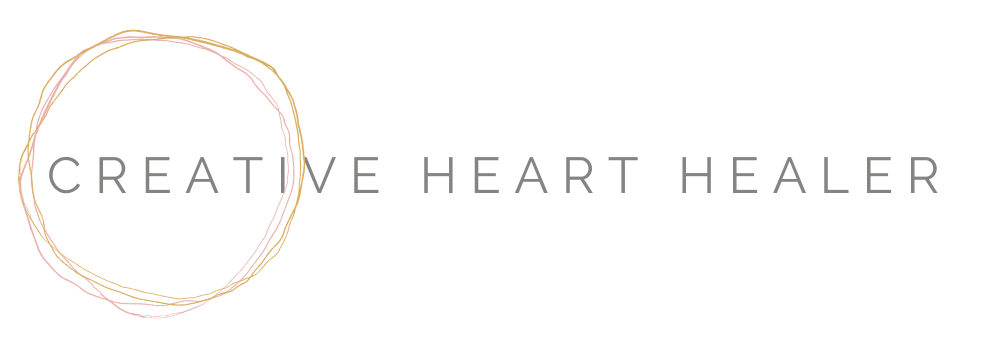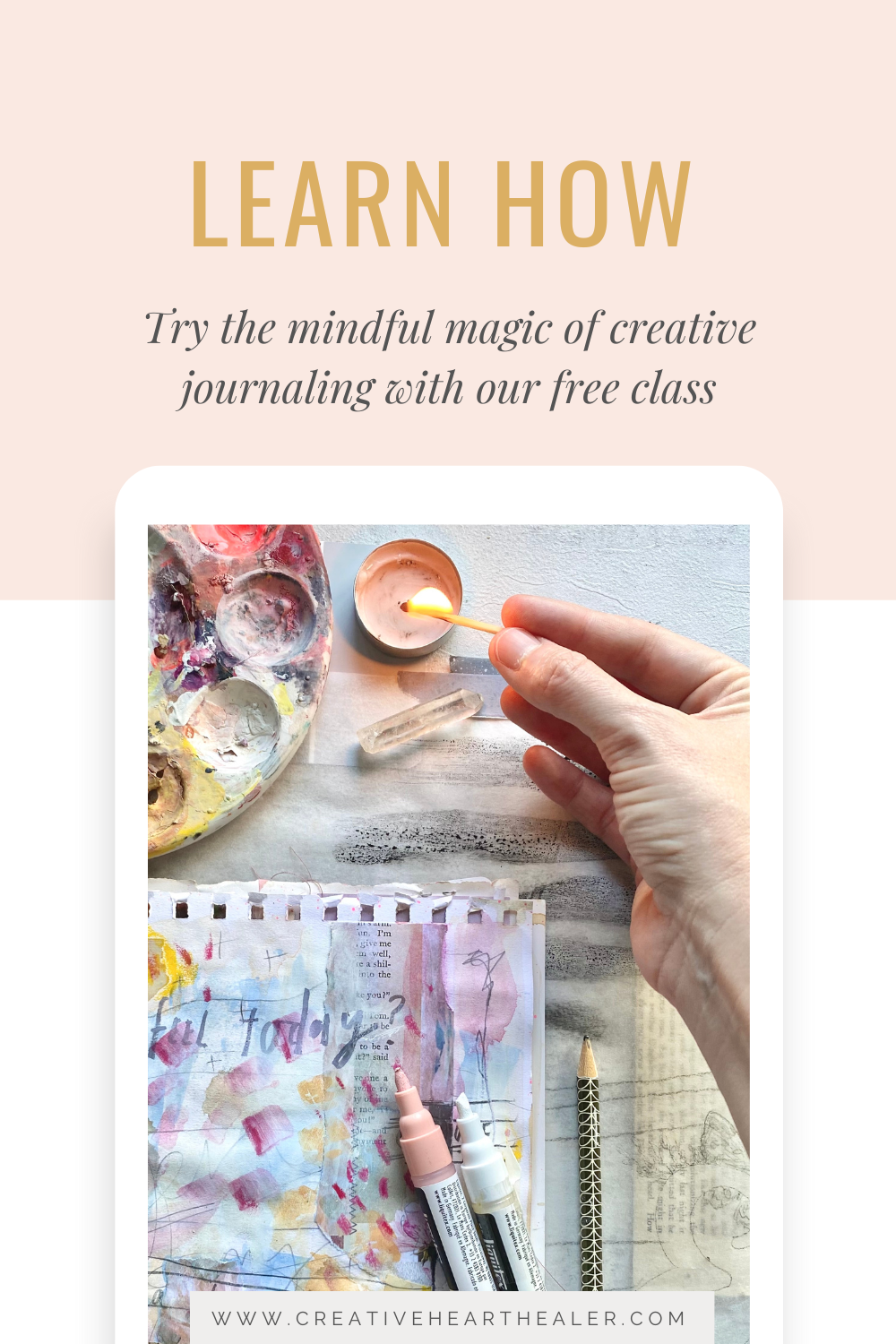MY TOP 10 TIPS FOR A MINDFUL & LIFE-CHANGING JOURNALING PRACTICE
YOU MAY HAVE HEARD THAT JOURNALING CAN BE LIFE-CHANGING - BUT HOW?
THESE ARE MY TOP TEN (PRACTICAL AND ACTIONABLE) TIPS THAT YOU CAN IMPLEMENT RIGHT AWAY TO START A LIFE-CHANGING CREATIVE JOURNALING PRACTICE TODAY
Creative journaling is about the process of creating - not at all about the end result. The healing, the transformations, the personal growth and self-development all come from ‘how’ you use your art journal, not so much about ‘what’ you create in there.
This process is not a ‘dear diary’ style of writing and recording, it is about using journaling as a tool to foster a mind and body connection. It is about creating purposefully and with intention, it is about building habits and rituals that support our mental wellbeing and nourish our soul.
Here are 10 tips you can begin to implement right away, to start seeing a real change in the way you approach your journaling and how the impact your journaling time has on your life.
1. RITUAL
Think about the small ways you can turn your journaling practice into more of a ritual. A ritual is a way of behaving or a series of actions carried out in a particular order in a particular situation. Rituals can be a way of training your brain or preparing your mind for what is to come. In relation to a journaling practice, a simple ritual can really set you up to gain as many benefits from your journaling time as possible.
Rituals have been found to benefit our physical well-being and immune system, lower cortisol, which in turn lowers heart rate and blood pressure and increases immune system function.
Creating a ritual around your journaling time can be as simple as, starting with a clean up of your space, making yourself a comforting hot drink, playing some music, mindfully selecting some materials to work with, and setting an intention.
2. SET AN INTENTION
Having a reason to journal makes all the difference to ‘benefiting from the process". Tuning into your needs in a simple way, such as setting an intention, allows your mind to find ways to support these needs while you are busy creating. This doesn’t need to be complicated, it could be as simple as selecting an affirmation card before you create, or writing yourself an intention for the day ahead and exploring that further in your journaling session. (I share how I set an intention for my journaling time and how it supports my creativity here, in my free course)
3. JOURNAL FROM 5 SENSES
Journaling from the 5 senses is something that really supports a healthy mind and body connection (which in turn supports a healthy mental and physical state). When you sit down to journal surround yourself with things that inspire you - your physical space affects your mental space. Consider how you can open up your 5 senses to really engage your mind. For me, it looks something like this: a hot drink (taste), pens with quotes on, textured journal covers and art materials (touch), an intention from a card deck (sight), music (sound), incense or candles (smell).
4. FORM A HABIT
The brain is a habitual organ, it loves consistency and routine. Thanks to the most ancient part of our brain - the amygdala - our fight or flight response is activated when we operate in a state of uncertainty (hello stress). Creating a routine will give the brain a sense of control and support your mind in relaxing and opening into new ideas and thoughts and focus on the present, rather than worry about what might happen in the future.
Creating a routine and building a habit around your journaling will put your mind in the right place to get the most benefit from the practice. It can be as simple as choosing the same time and place each day and using the same tools, but most importantly it is a commitment to building the habit in the first place.
5. MAKE IT ACCESSIBLE
Finding time for yourself, your self-care and your journaling practice are about 2 things: shifting your mindset and scheduling time in. Often we are stuck in negative patterns of thinking that leave us thinking we are just too busy for self-care, we think it selfish and even feel guilty if we do take some time out for ourselves.
The first step is to shift these mindsets. The second is to take action to prioritse this time, push it higher up your to-do list and actually schedule it into your calendar.
Other ways you can make your journaling time more accessible, for example, leave your journal and supplies set up and ready to go so you can dip in and out when you have the time, carry a pocket journal with you throughout the day in case you see something inspiring on your travels you want to jot down or stick in, get up 20 minutes earlier or stay up 20 minutes later.
6. LET GO OF EXPECTATIONS
Let your art-making go in whatever direction it wants, follow its lead. Did the paint dribble in a way you didn't want? Explore that, highlight that, pause, and delight in that. Did you end up with a page that wasn't what you were aiming for? Great! I bet this will be one of the pages you end up loving the most.
It's all about going with the flow - revelling in the process (the present moment) not worrying about the end result (the future).
7. MASTER MINDFULNESS WHILE JOURNALING
By being mindful while creating, playing on the page and allowing your hand to express how your body feels is a powerful way to release tension held in the body. It comes with experimentation though, so get curious, how does it feel when you draw a looooong, slooooow line, or quick, hard, fast dashes, does making a big scribble 'feel' like your current state of mind, is splashing paint in drips and drops a 'happy' expression of your 'self'?
The flip side of this expression is to pay attention to the present moment as you create (don't be thinking about the shopping list or laundry waiting for you) the aim is to tune right in, to the smell of the paint, the feel of the pen scratch, the noises of the pencil across the page, the textures, the shapes, the colours.
8. ENJOY THE PROCESS - NOT THE END RESULT
You will get the most out of your journaling practice when you learn to enjoy the process and let go of the end result - the finished page.
It is not the words, the paint or the things we stick in the pages of our journals that make them powerful, it is the intention behind the creating. It is a deep desire to know yourself, to understand yourself better, to learn and grow from your creative discoveries.
For me personally, journaling is a place to 'just be me'. It is a safe place to brain-dump, heart-storm, get quiet, get messy, practice being present and I always find that my emotional battery becomes recharged in the process. A journal is a place where you don't have to be anything other than exactly who you are in that exact moment. Isn't that an incredible thought?
Most important of all, remember this: art doesn’t need to look pretty to heal.
9. CHOOSE PROGRESS OVER PERFECTION
Give yourself a break. Stop comparing your journal pages to other people on Instagram and Pinterest. Remind yourself that this is a journey and that every time you show up to your journal you are learning and growing, about art-making and about yourself. Your progress is what is powerful.
Comparing yourself and what you create in your journal to anyone else is a major block to creativity. More often than not we are viewing someone else’s best work and comparing that to our everyday art, leaving us feeling as though our creative work is not good enough.
If you must compare, compare yourself to yourself. Compare today’s journal page to yesterday’s. If you have grown, if your journaling and art-making are improving, you are progressing - you’re winning!
10. EXPERIMENT AND PLAY IN YOUR JOURNAL
There is no need for or anything to be gained by aiming for perfection in your journal. Instead, I recommend you aim for release, for play, for experimenting, for messy handwriting, spelling mistakes, paint spills, ugly art and healing creativity.
Keep experimenting and playing in your journal, try new things and see what style you prefer. You can try list making, free writing, doodling, mark making, collage, poetry . . . the list is endless. Most importantly remember that this is YOUR journal and you can use it however you choose.
If you enjoyed this post you might also like:












